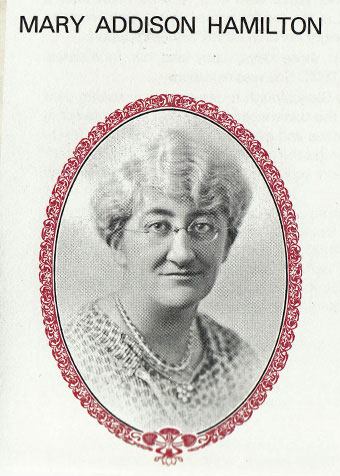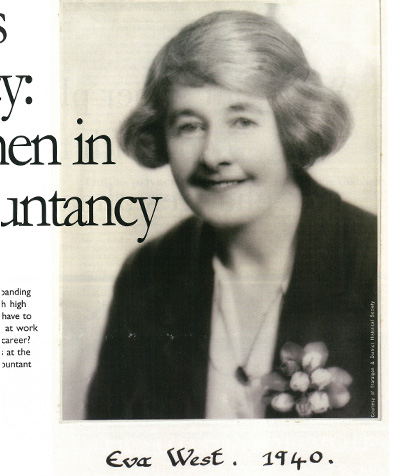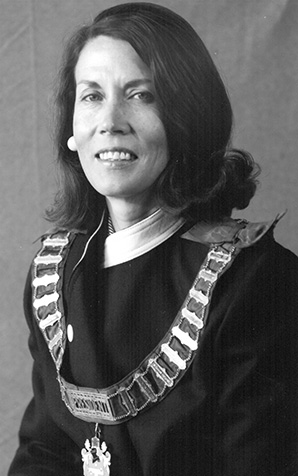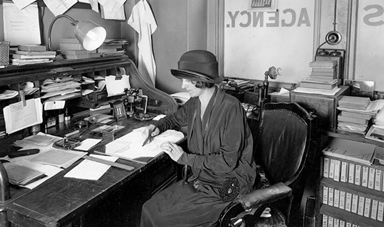Loading component...
At a glance
Today, about half CPA Australia’s members are women, but the profession deliberately excluded them in its early years.
Arguments against women working as accountants included that they were taking the jobs of husbands, fathers and brothers and should stay at home, and that females were not mentally up to the work.
The debate raged in organisations such as the Incorporated Institute of Accountants, Victoria where, in 1894 Thomas Brentnall, a trailblazer in establishing accounting as a profession in Australia, warned of “the invasion by the advanced woman”.
The “advanced woman” referred to the educated middle-class, whom it was presumed did not need a wage.
Brentnall had changed his mind by 1899 when the Queensland and Victorian institutes held a joint vote on whether to admit women and he voted for change. The vote was lost by 69 against, 26 in favour, and there was legal opinion that the constitutions of most of the Australian accounting bodies did not allow for women.
No female accountants
Australia had several rival accounting bodies in the early 1900s, which had fought for accountancy to be recognised as a profession, giving them the right to exclude unqualified people. They were sensitive to any move they thought could compromise their reputation, such as admitting women, who would be considered less qualified and less experienced practitioners.
There was also a fear that the profession could become overcrowded, pushing down wages.
Tenacious women continued to apply to the various organisations and also had male advocates writing to the accounting bodies supporting the admission of sisters and daughters.
The Federal Institute of Accountants’ (FIA) minutes record: “One lady had the temerity to apply for admission as a member during 1902, the minutes show that the secretary was instructed to inform her that ‘under no circumstances could the application be considered’.”
Women had to wait until 1925 for the FIA to change its mind, and its articles, but that was the year Florence Roughley, later known as Florence Borrell, topped the FIA examination and was admitted as a member.
Women and war

Large numbers of women moved into accounting roles when men went to fight in the First World War in 1914 and after the war there was a sense that society was changing. The times were against the accounting bodies in Australia, the US and Britain that fought against admitting women members.
In 1918, the Commonwealth Institute, which had allowed women to sit its examinations only to fill labour shortages caused by men enlisting, agreed that women could be admitted on the same terms as men.
Mary Addison Hamilton became one of the first women in the Commonwealth to be admitted to a professional accounting body when in 1915 she joined the Institute of Accountants and Auditors of Western Australia, which had voted to in 1912 to admit women.

Hamilton worked at the WA Education Department for more than 40 years. Her position was always as clerk despite her accounting qualifications and when she retired in 1952 she was the second-ranked statistics officer in the department.
Eva West began studying accounting in 1915 and in the 1920s set up her own practice in Traralgon, Victoria, later holding the CEO-level role of shire secretary.
By 1919 the various accounting bodies had 1341 members, of whom eight were women. In 1933 there were 74 women out of 4049 practitioners and although the membership of the Australian Society of CPAs (ASCPA) was 24 per cent female in 1996, 43 per cent of new members were women.
Women enter accountancy in numbers
Elizabeth Davis of South Australia became the first woman member to be elected as a councillor of the Australian Society of Accountants (ASA), a forerunner to CPA Australia, in 1972.

The ASA had 36,928 members by 1978, of which 5 per cent were women. That figure had jumped to 25 per cent by 1988 when Price Waterhouse partner Elizabeth Alexander became the first female national president of any major accounting professional body when she became ASA president.
Alexander, the first female partner of any of Australia’s “big eight” accounting firms, told the Australian Financial Review that women were making remarkable strides in the profession and Australian Accountant that Price Waterhouse might have wondered why a woman wanted to become partner “but once they realised I was serious about having a career and was prepared to put my shoulder to the wheel to achieve it, my sex became irrelevant”.
Related resource
Nowadays, about one in five partners of the Big Four professional firms are women. Cindy Hook is CEO of Deloitte Australia and in 2017 Alison Kitchen was elected national chairman of KPMG Australia, the first woman to chair a Big Four firm.
Encouraging women to become accountants
In the 1990s there was strong debate about how female accountants could combine a career with family, mirroring polemic in Australian society at the time, when large numbers of women were shaking the rungs of the corporate ladder.
In 1991, the renamed ASCPA commissioned research into female participation in the profession, finding that while older women had often “fallen into” accounting, younger women were deliberately choosing it as a career.
Women did, nevertheless, report difficulties in networking, particularly in traditional male ways involving alcohol and sport, and wanted more flexible hours to suit their childcare needs.
Some encountered clients or partners who did not want to work with a woman or reported, “I’ve been asked at interviews whether I intend to go off and have babies.”
In 1986, Sue Daniels, an auditor with Deloitte Haskins and Sells, told Australian Accountant magazine (the predecessor to INTHEBLACK), “If you say something serious or tough, you get comments that you are ‘bitch’, whereas a guy would be regarded as normal for saying the same thing.”
Daniels added that clients were sometimes friendly and helpful and noted that on some auditing jobs, the whole audit team was made up of women.
More women become accountants
There were few women accountants in the early years of the profession and they often felt unwelcome and that they were expected to fail. Nevertheless, prominent female accountants interviewed over the years have always encouraged women to enter the profession and predicted that younger women would find it easier.
This has been the case, with about 47 per cent of CPA Australia members today being women.
With research by Kerrie Ludekens.
Sources:
Australian Accountant, issues July 1996, November 1986.
Australian Financial Review, “Slow drift from male dominance”, 29 June 1988.
Cooper, K, Accounting by women: fear, favour and the path to professional recognition for Australian women accountants, Accounting History, August 2010.
CPA News, March 1998.
Linn, Rob, Power, Progress and Profit, A history of the Australian Accounting Profession, published by the then Australian Society of CPAs, 1996.
Worthington Di Marzio, Female participation in the accounting profession – the current and future perspective, a qualitative research report prepared for the ASCPA, June 1996.
Worthington Di Marzio, Females and membership of the ASCPA, a research report prepared for the ASCPA, August 1991.

